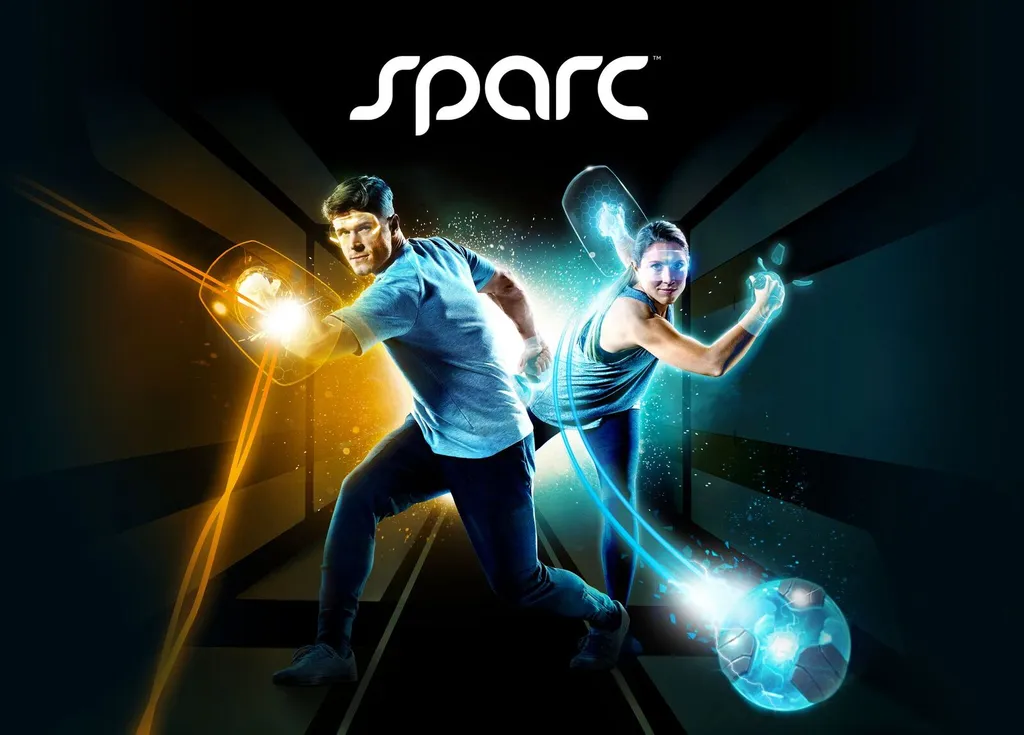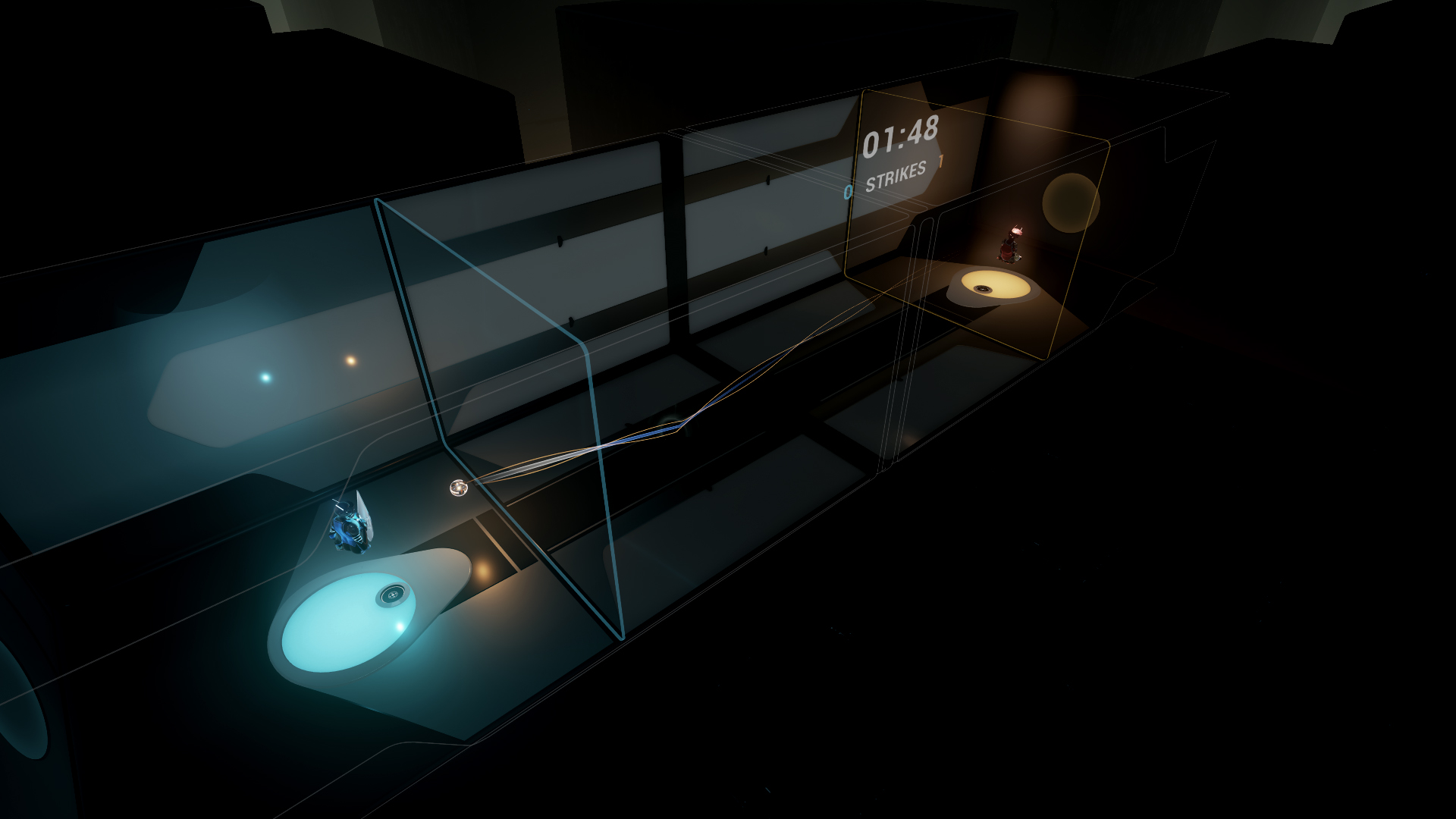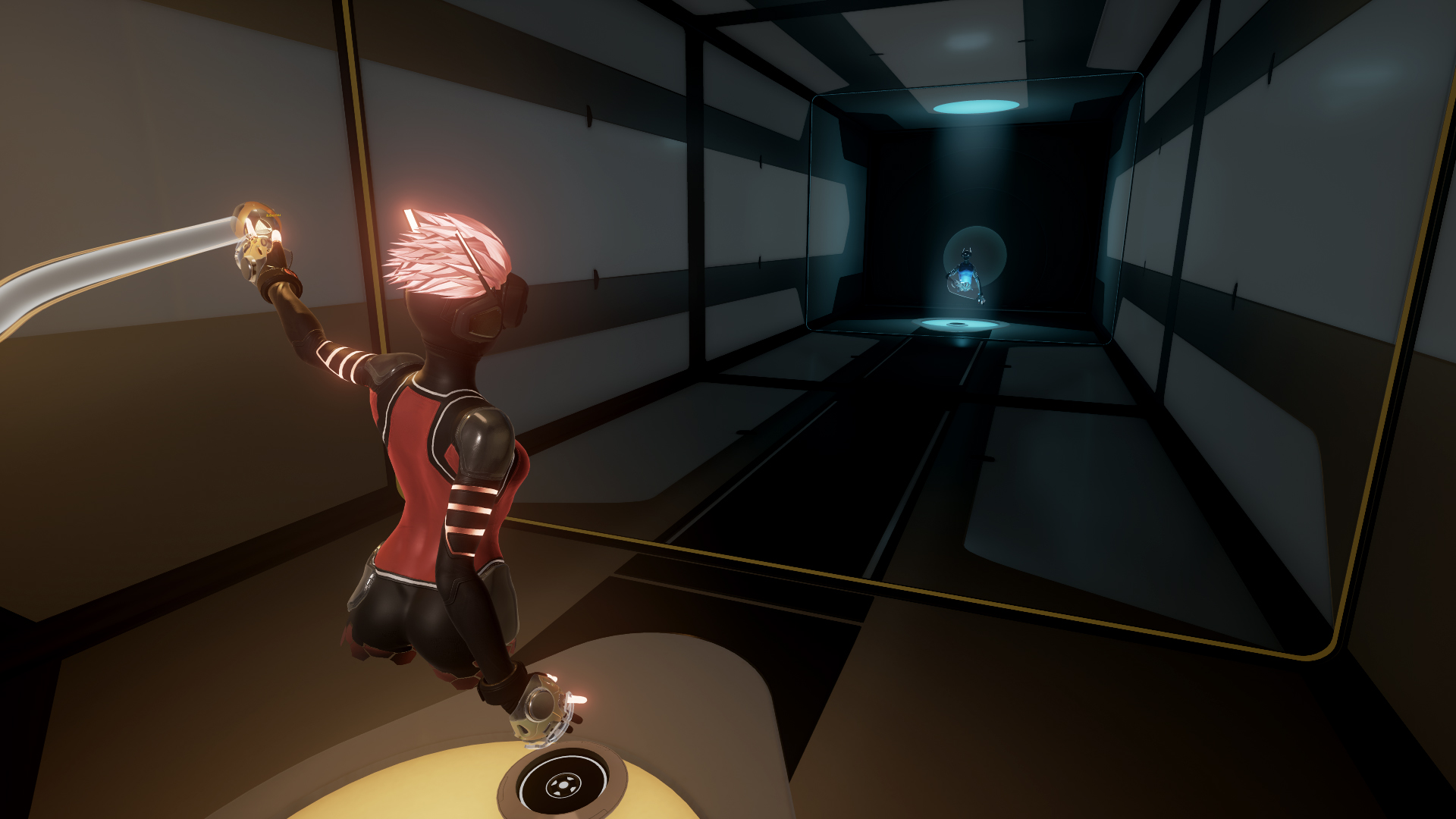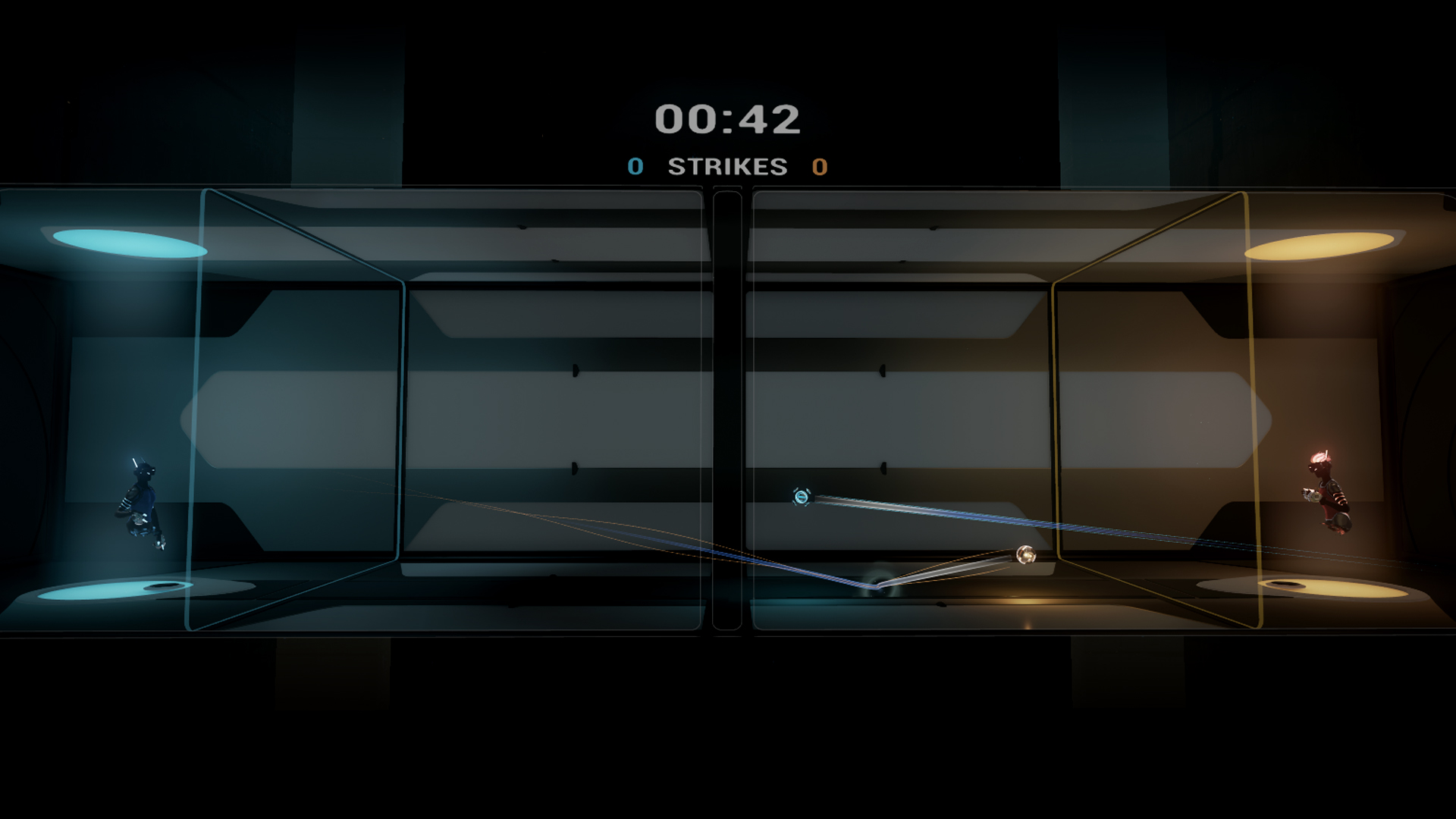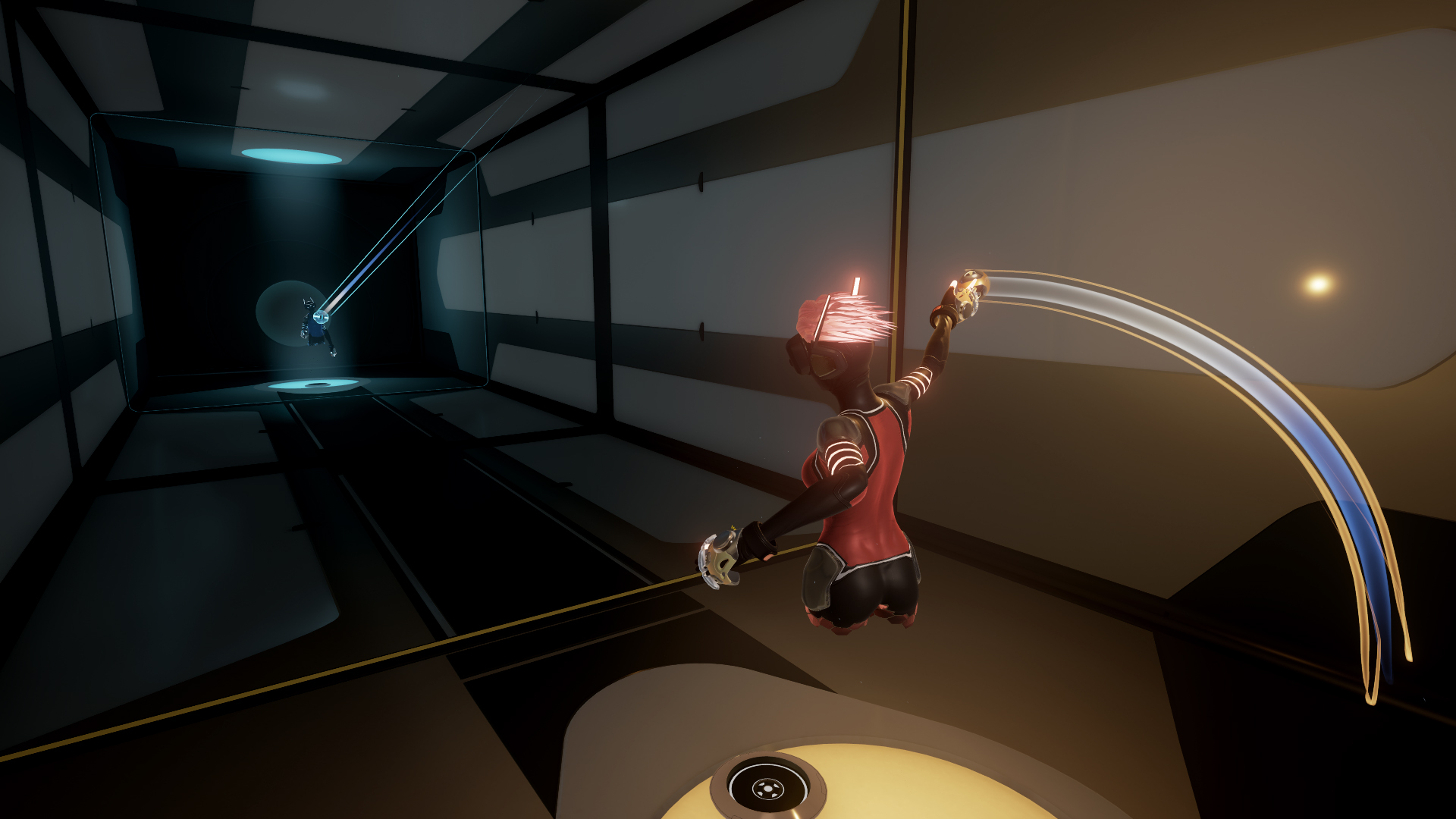The game formerly known as Project Arena is now known as Sparc. We had a chance to play the futuristic sports experience at this year’s GDC, and boy are our arms tired! Wait, is that how that old joke goes?
Having released EVE: Valkyrie and Gunjack last year, CCP is no stranger to VR, but this is its first foray into a new franchise outside of the EVE universe. The concept behind Sparc is simple enough: it’s an online 1-on-1 full-body Pong + Discs of Tron meets dodgeball of sorts. Two players face off against one another in a narrow 3D court. Each has a ball, and the ultimate goal is to hit the opposing player.
While Sparc may be simple to understand, I found the mechanics quite elegant and the tactics deeper than just “huck the ball as hard as you can.” For starters, you spawn a power shield while holding your own ball, making it easier to deflect incoming projectiles. In beginner mode you can also punch back opposing balls if you hit them directly with your knuckles. But that added security is gone in pro mode, where you either have to block with your shield – meaning you don’t have a ball in play at that time – or deftly dodge to avoid being hit. To make it more challenging, each time your opponent manages to hit your stroke zone – basically a box around where your player starts the match – their ball gets bigger, making it more difficult to dodge after successive stroke zone hits.
The ball reacts as you would expect a real ball to react, meaning you can put a little English on it with your wrist, giving it a nice curving arc, or even better yet making it behave rather erratically when it rebounds off a surface. Not surprisingly, you also see a marked increase in the speed of the ball if you do a full arm rotation and really put some pepper on it than if you do a piddly wrist-flick.
There’s also quite a bit of strategy to blocking, and after playing a few matches I was trying to deflect the opposing ball at a more shallow angle with as little rebound force as possible so I could then whip my ball faster than my opponent’s projectile would return so they wouldn’t have the benefit of a shield. Another tactic I picked up on was forcefully backhanding my opponent’s ball with my shield and letting go of the trigger directly after impact to send two projectiles down the court. Opposing players can score on themselves if they get hit by their own ball without catching it, so it was an effective strategy, albeit one that required perfect timing so as to not drop my own shield too quickly.
Games get pretty intense as you flail your arms around at high speed and jump and lean to dodge, and after three matches I was starting to break a sweat. But you don’t always have to be in the thick of the action as Sparc will also include a spectator mode where you can take a break and watch other players going at it in a mini arena. This is a great way to pick up strategies, especially if you join games with some of the top-ranked players on the leaderboard.
All in all, Sparc was a fun, intense experience, and I can’t wait to play more. Luckily none of us will have to wait too much longer as Sparc will be available later this year for PSVR, Oculus Rift and HTC Vive.

